Boxer Dog - Breed Facts & Characteristics
Known for their playful and friendly nature, Boxers are full of bouncy exuberance. A little boisterous at times, they have an abundance of energy and a great zest for life. With early training, Boxers also make loyal and devoted companions, and develop a deep attachment to their human families. Really deep. In fact, they like nothing better than being right by your side – and will even fall asleep on your knee, if you let them.
Official name: Boxer
Other names: German Boxer, Deutscher Boxer, American Boxer
Origins: Germany
Tendencia a babear
{score 0 out of 5}Necesidades de aseo
{score 0 out of 5}Nivel de muda de pelo:
{score 0 out of 5}Tendencia a ladrar
{score 0 out of 5}Nivel de energía
{score 0 out of 5}Compatibilidad con otras mascotas
{score 0 out of 5}¿Clima cálido?
{score 0 out of 5}¿Clima frío?
{score 0 out of 5}Apto para vivir en departamento
{score 0 out of 5}Puede quedarse solo
{score 0 out of 5}¿Mascota familiar? *
{score 0 out of 5}
| Macho | Hembra |
|---|---|
| Altura | Altura |
| 58.5 - 63.5 | 54.5 - 59.5 |
| Peso | Peso |
| 30 - 31 | 25 - 26 |
| Cachorro | Adulto |
|---|---|
| 2 to 15 months | 15 months to 5 years |
| Madurez | Adulto mayor |
| 5 to 8 years | Over 8 |
| Bebé | |
| Birth to 2 months | |
Tendencia a babear
{score 0 out of 5}Necesidades de aseo
{score 0 out of 5}Nivel de muda de pelo:
{score 0 out of 5}Tendencia a ladrar
{score 0 out of 5}Nivel de energía
{score 0 out of 5}Compatibilidad con otras mascotas
{score 0 out of 5}¿Clima cálido?
{score 0 out of 5}¿Clima frío?
{score 0 out of 5}Apto para vivir en departamento
{score 0 out of 5}Puede quedarse solo
{score 0 out of 5}¿Mascota familiar? *
{score 0 out of 5}
| Macho | Hembra |
|---|---|
| Altura | Altura |
| 58.5 - 63.5 | 54.5 - 59.5 |
| Peso | Peso |
| 30 - 31 | 25 - 26 |
| Cachorro | Adulto |
|---|---|
| 2 to 15 months | 15 months to 5 years |
| Madurez | Adulto mayor |
| 5 to 8 years | Over 8 |
| Bebé | |
| Birth to 2 months | |
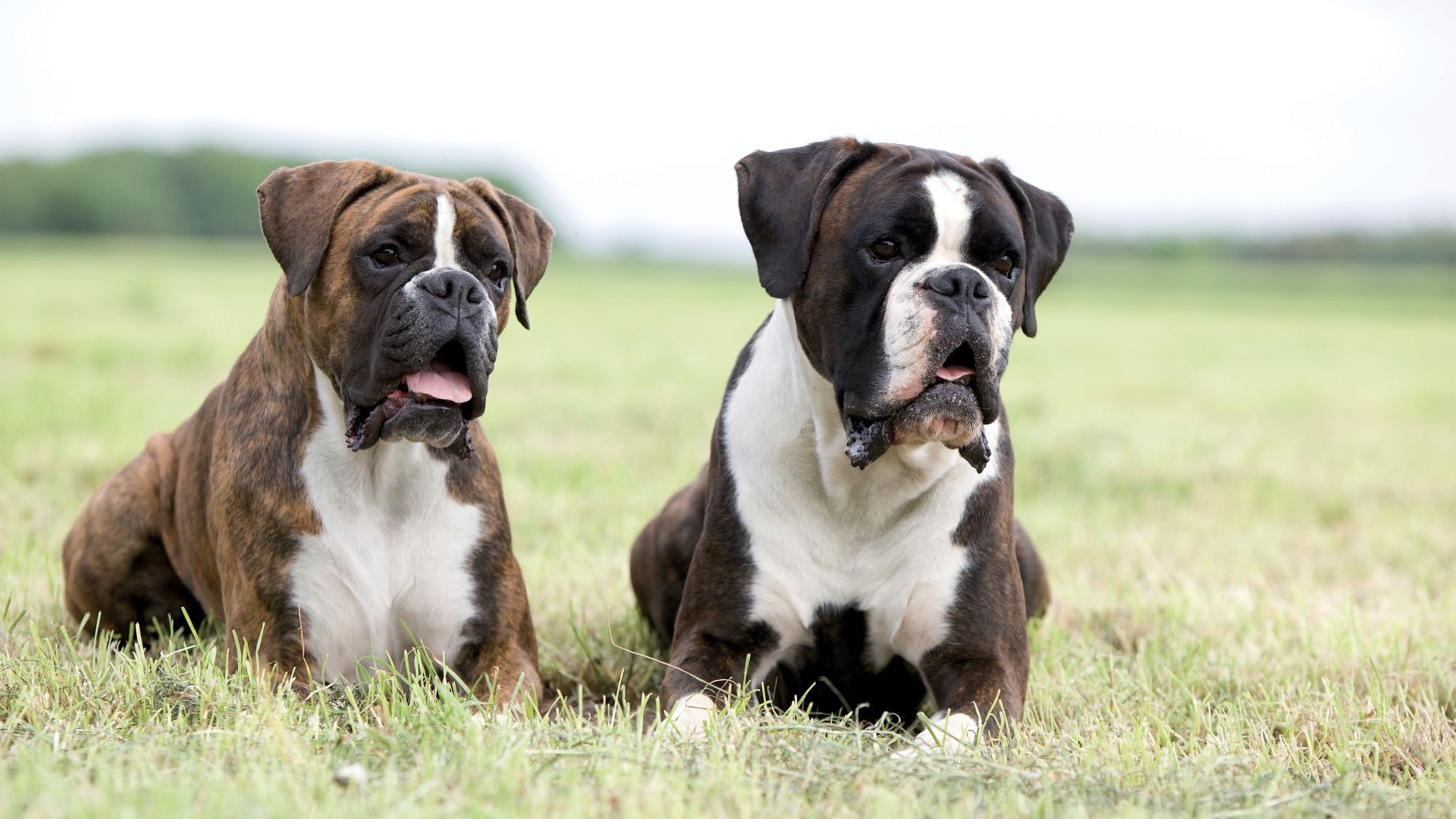
Get to know the Boxer
All you need to know about the breed
Renowned for their boundless energy, Boxers have a friendly and fun-loving temperament with an enthusiasm for just about everything around them. There’s just so much to be excited about in life – or at least that’s their excuse and they’re sticking to it.
But they are also a very gentle, affectionate breed of dog who form strong bonds with their owners. Also good with children once they’ve had a bit of training, Boxers are normally very careful and respectful to those around them. As they can sometimes be a little more boisterous than they intend, though, it’s best to keep very little ones away – just in case – but otherwise they are renowned for being a very trustworthy dog.
Protective and loyal as a breed, Boxers will bark fearlessly at anything they perceive to be a threat to their human pack. Even if they are more likely to lick a stranger than anything else. They make good watchdogs, nonetheless.
Originally descended from hunting dogs in Germany, where they would help to pin down prey, Boxers were later crossed with a smaller, mastiff-type breed from England. The name stems from the way they spar with their front paws – literally like a fighter – when playing. This does mean they can be a bit prone to jumping up, but training can help.
In terms of their appearance, Boxers have a short, sleek coat, distinctive blunt muzzle and intelligent, dark-brown eyes. As their colouring can range from a dappled brindle to a rich red to pure white, every dog has a distinct look of their own. With their muscular, athletic build, they also have a graceful, powerful movement.
On that note, it’s important to be aware that Boxers need at least two hours of exercise a day. They will also benefit from some training classes early on in their lives to help keep that bouncy Boxer buoyancy in check. But as long as they have those two things, along with plenty of affection from their owners, Boxers will reciprocate with great devotion. It’s not for nothing that they are regarded as one of the most perfect family pets.
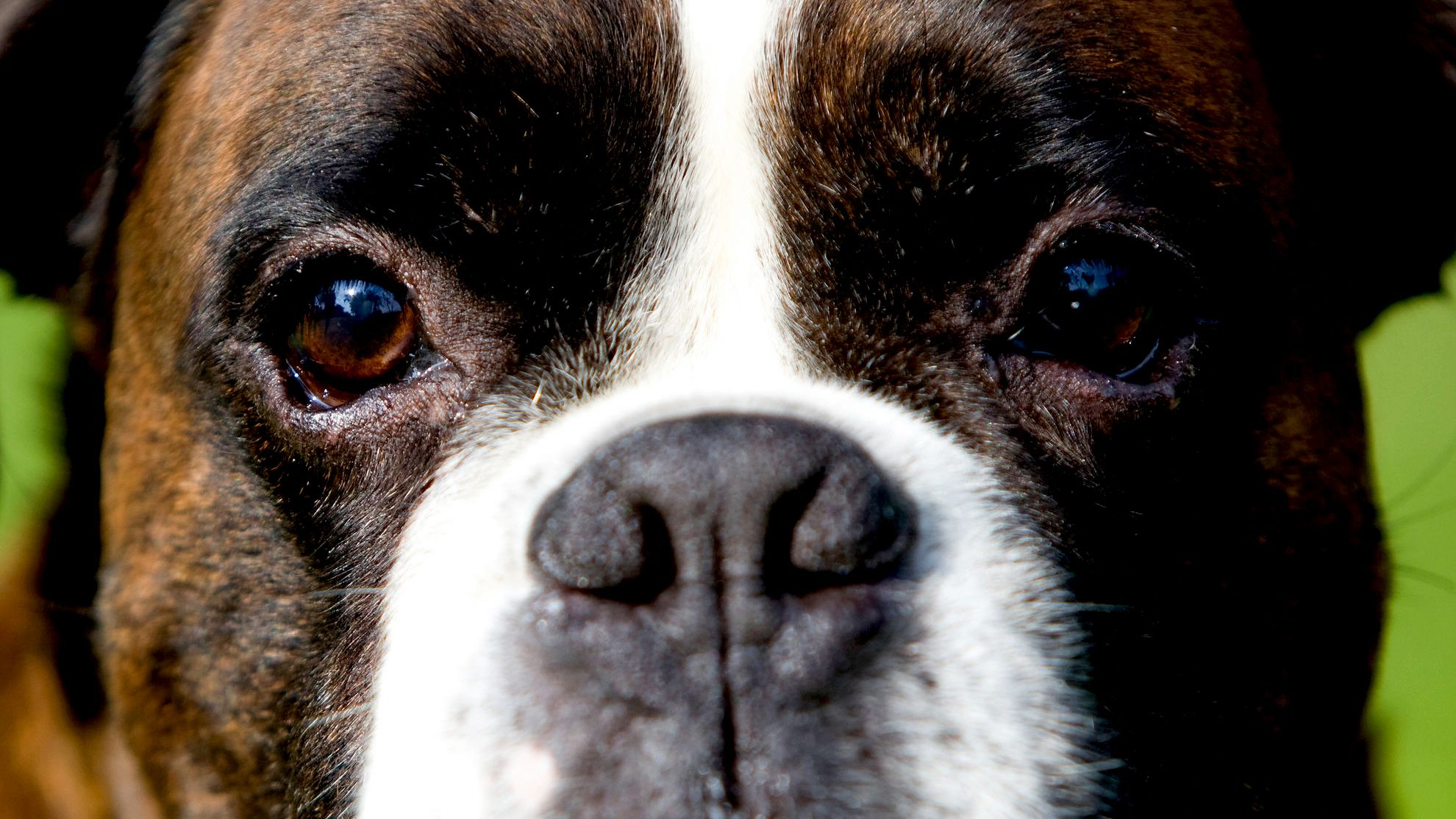
2 facts about Boxers
1. A canine Peter Pan
One of the many interesting facts about Boxer dogs is that they have one of the longest puppyhoods of any breed. Although they are classed as an adult from around 15 months, it takes them about three years to reach full maturity. So, perhaps it’s no surprise they retain their youthful enthusiasm for life.
2. Two of a kind
Not commonly known is that there are actually two types of Boxer dogs. As well as the standard Boxer breed, there is an American variant that has slightly different physical characteristics. For example, the body of the American Boxer is less bulky, with tauter lines, and the neck is more arched. Also the muzzle and ears are both slightly longer in the American.
History of the breed
It’s hard to believe that the Boxers we know and enjoy today have their origins in ferocious hunting dogs. And yet, if we explore their history, that’s exactly what happened.
Originally descended from the old fighting dogs of Tibet – to go back to their very distant roots – the Boxer dog of today hails from Western Europe. To pick up the story, we need to visit the Germany of the 1800’s where we meet the Bullenbeisser (‘bull biter’) dog. Used by the German aristocracy to chase and pin down hunting prey, these hardy animals tackled everything from deer and boars to bears.
Later, as times changed and estates were broken up, traditional hunts fell out of favour. In fact, for a while, things looked a little precarious for the Bullenbeisser. But then everything changed when they were crossed with a smaller, mastiff-type breed from Britain – and, by the late 1800’s, we had the first modern-day Boxer dogs.
In 1904, the breed was registered with the American Kennel Club. There, they went on to become one of the most popular dogs in the country – and frequently appear in lists of ‘top 10 breeds’ to this day.
Back in Germany, meanwhile, Boxers were one of the first breeds to be used by police – and they were also enlisted by the military during both World Wars. Today, despite their tough-guy origins, the Boxer dog is regarded as one of the friendliest breeds around.
From head to tail
Physical characteristics of Boxers
1.Body
2.Head
3.Fur
4.Stature
5.Tail
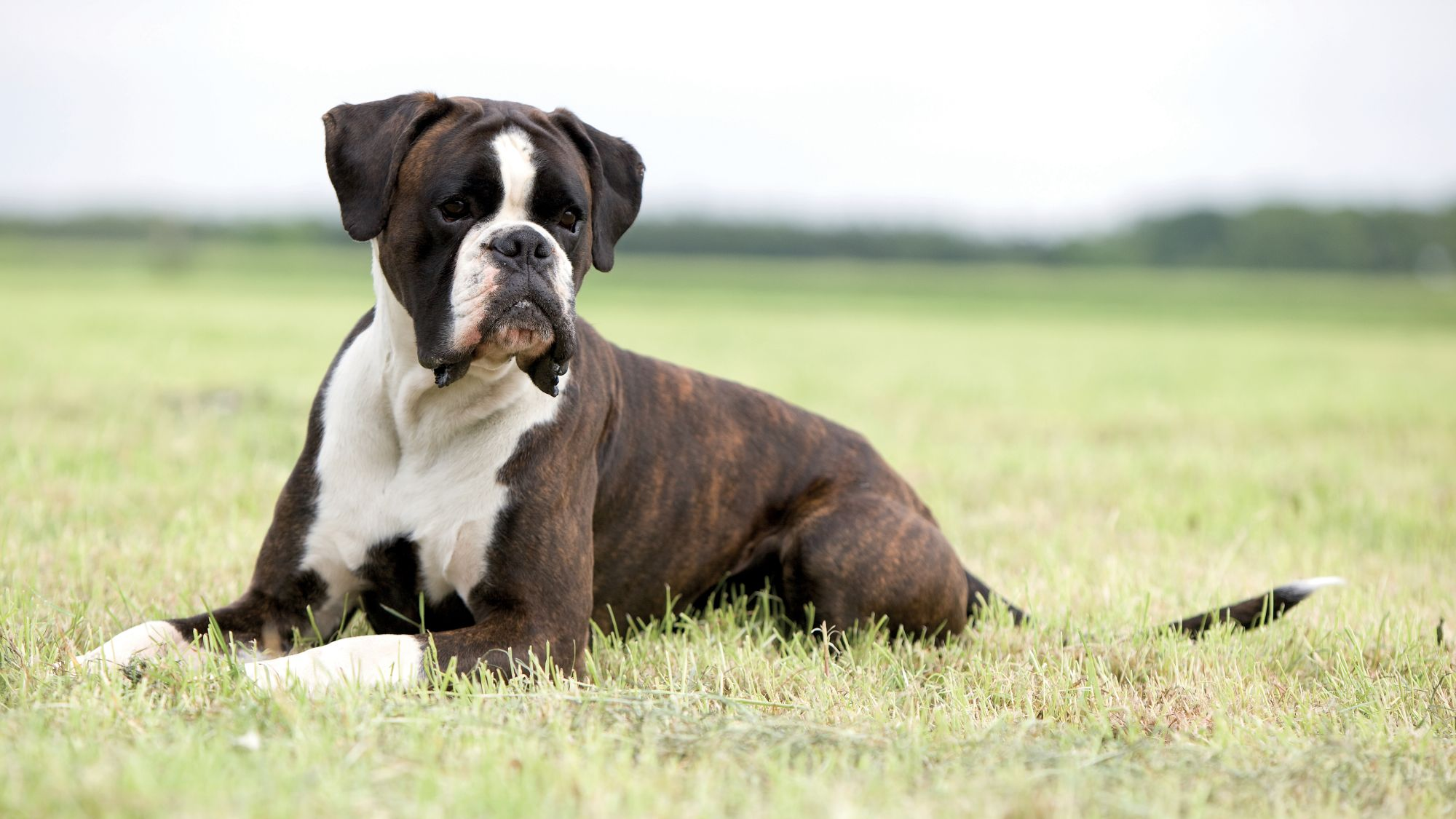
Things to look out for
From specific breed traits to a general health overview, here are some interesting facts about your Boxer
Breathing problems can be an issue
As Boxers belong to the brachycephalic family of breeds, which means they have a wide skull shape, flat face and short nose, they can be prone to a few potential health issues. In particular, occasional breathing problems if they get too excited (not unusual for Boxers, let’s face it) or over-heated in hot weather. In severe cases, this can result in fainting. The best advice is to choose a responsible breeder, who will be trying to develop a healthier Boxer dog. Also, keep an eye on their weight as this can exacerbate the problem. If needed, seek out advice from your vet who will be able to offer further tips.
Check them regularly for any lumps or bumps
Another potential health problem for Boxers is that they can be susceptible to cancer. In fact, that’s the most common serious health issue they are likely to face in their lives. The good news, though, is that early detection can stop things in their tracks. So keep an eye open for any changes in your Boxer such as breathing problems (a sign of lung cancer) or limping (a symptom of bone cancer). Also, have a chat with your vet about regular examinations for your dog. In addition, white Boxers can be prone to skin cancer (as can other colours with white markings in the mix), so take precautions to minimise sun exposure.
They can also be prone to a type of canine heart disease
Known as ‘Boxer cardiomyopathy’, as it is more prevalent in the Boxer breed than any other, this genetic condition is a disease of the ventricles.
Healthy diet, healthier dog
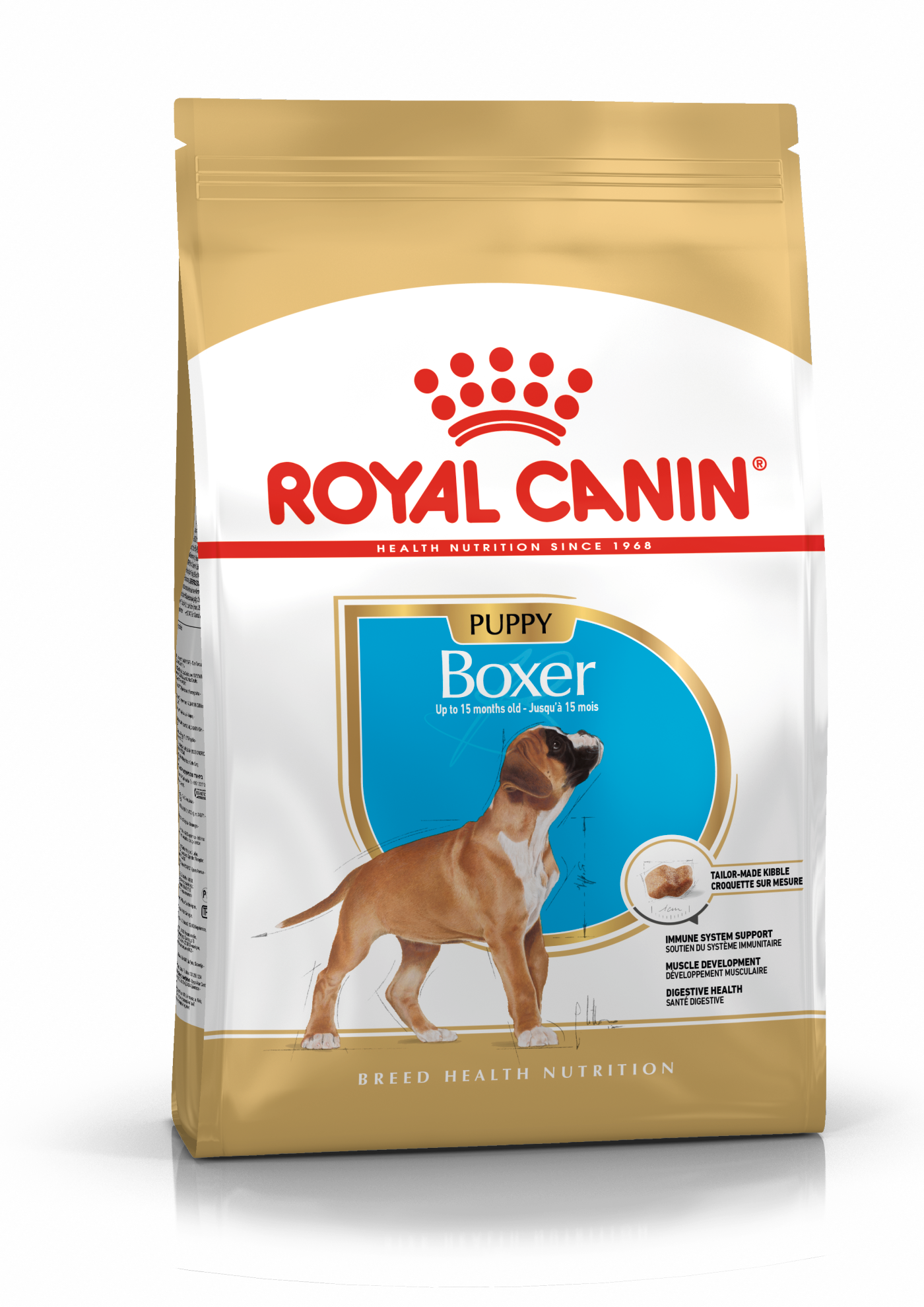
When choosing food for a Boxer, there are many factors to consider: their age, lifestyle, activity level, physiological condition, and health including potential sickness or sensitivities. Food provides energy to cover a dog’s vital functions, and a complete nutritional formula should contain an adjusted balance of nutrients to avoid any deficiency or excess in their diet, both of which could have adverse effects on the dog. Clean and fresh water should be available at all times to support good urinary regularity. In hot weather and especially when out exercising, bring water along for your dog’s frequent water breaks. Energy intake may also have to be adapted to the climatic conditions. A dog that lives outdoors in winter will have increased energy requirements. The following recommendations are for healthy animals. If your dog has health problems, please consult your veterinarian who will prescribe an exclusive veterinary diet.
A Boxer puppy’s requirements, in terms of energy, protein, minerals, and vitamins, are much greater than those of an adult dog. They need energy and nutrients to maintain their body, but also to grow and build it. Until they are 15 months old, Boxer puppies’ immune system develops gradually. A complex of antioxidants - including vitamin E - can help support their natural defences during this time of big changes, discoveries, and new encounters. Their digestive functions are different from an adult Boxer’s, too: their digestive system is not mature yet so it is important to provide highly digestible proteins that will be effectively used. Prebiotics, such as fructo-oligosaccharides, support digestive health by helping balance the intestinal flora, resulting in good stool quality.
It is important to choose a kibble with an appropriate size, shape, and texture to make it easier for them to grasp with their teeth and eat. This growth phase also means moderate energy needs. Large-breed puppies, such as Boxer puppies, whose growth period is long and intense, are especially susceptible to skeletal and joint problems, including limb defects, bone deformities, and joint lesions. The first part of growth is mainly concerned with bone development, although the muscles also start to grow. Limiting the energy concentration of a food for Boxer puppies and feeding a correct daily amount will help control the speed of growth and minimise the risk of excess weight. Neutering is a factor in overweight dogs.
The brachycephalic nature of the Boxer is an important factor that needs to be taken into account when choosing the size, shape, and texture of kibble to make it easier for them to pick up and to encourage chewing. This growth phase also means moderate energy needs. Large-breed puppies, such as Boxer puppies, whose growth period is long and intense, are especially susceptible to skeletal and joint problems, including limb defects, bone deformities, and joint lesions. The first part of growth is mainly concerned with bone development, although the muscles also start to grow. This means that a puppy that eats too much - takes in too much energy - will put on too much weight and grow too quickly. This extra weight on the skeleton will increase the risk of bone deformity and joint problems, or dysplasia. Limiting the energy concentration of a food for Boxer puppies and feeding a correct daily amount will help control the speed of growth and minimise these risks. An adjusted protein content and L-carnitine will support muscle development. Concentrations of other nutrients should be higher than normal in a specially formulated growth food. Although the calcium content in the food needs to be increased for large-breed puppies, they are more sensitive to excessive calcium intake. It’s important to understand then that adding any ingredients to a complete food formulated for the growth phase is at best unnecessary and at worst dangerous for the animal, unless prescribed by a veterinarian. It is recommended to split the daily allowance into three meals a day until they are 6 months old, then to switch to two meals per day.
Promoting optimal
digestibility with high quality protein and a balanced supply of dietary fibre
Helping preserve the health
and beauty of the skin and coat with the enriched addition of essential fatty
acids (especially EPA-DHA), essential amino acids, and B vitamins.
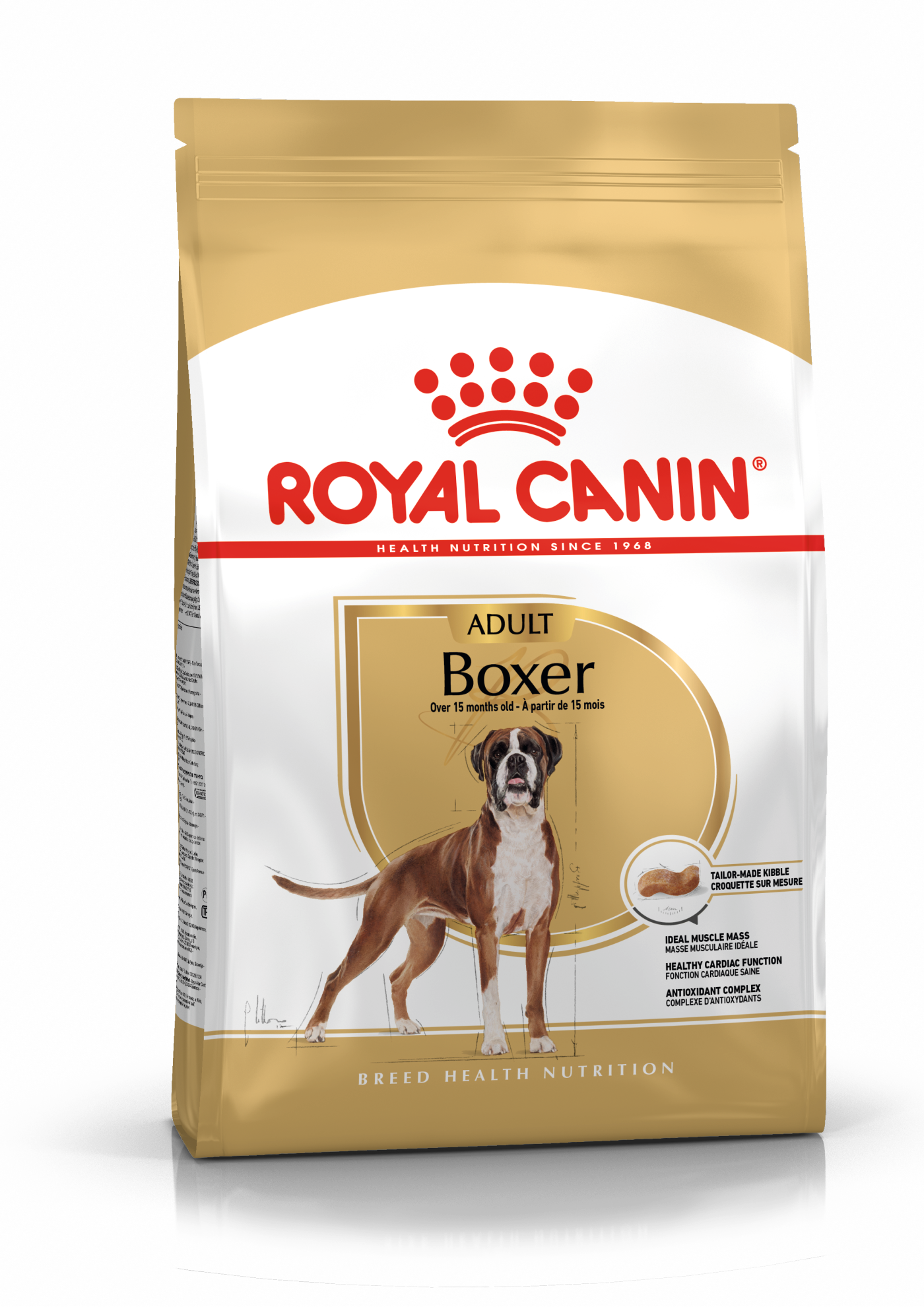
The main nutritional goals for adult Boxers are:
Maintaining an ideal body weight and muscle mass with an adapted protein content and L-carnitine that promotes fat burning
Helping support good cardiac function with an adapted content of minerals, EPA-DHA, taurine, L-carnitine, and antioxidants
Helping to support the health of their bones and joints, with glucosamine, chondroitin, and antioxidants
Promoting optimal digestibility with high quality protein and a balanced supply of dietary fibre
Helping preserve the health and beauty of the skin and coat with the enriched addition of essential fatty acids (especially EPA-DHA), essential amino acids, and B vitamins.

After 5 years old, Boxers will start facing the first signs of ageing. A formula enriched with antioxidants will help maintain their vitality, and specific nutrients, such as chondroitin, and glucosamine, will help support healthy bones and joints. Ageing is also accompanied by the modification of digestive capacities and particular nutritional requirements, so food for older Boxers should have the following characteristics:
Higher vitamin C and E content. These nutrients have antioxidant properties, helping to support the body’s cells against the harmful effects of the oxidative stress linked to ageing
High-quality protein. Contrary to a widely held misconception, lowering the protein content in food brings little benefit in limiting kidney failure. On top of it, older dogs are less
efficient at using dietary protein than younger dogs. Reducing the phosphorus content is a good way of slowing down the gradual deterioration of kidney function
A higher proportion of the trace elements iron, copper, zinc, and manganese to help maintain good condition of the skin and coat.
A higher quantity of polyunsaturated fatty acids, like borage oil and fish oil, to maintain the quality of the coat. Dogs can normally produce these fatty acids, but ageing can affect this physiological process
As they age, dogs increasingly suffer from teeth problems. To ensure they continue to eat in sufficient quantities, the size, shape, and texture of their kibble needs to be tailored to their jaw.
Throughout their life, it is important to avoid feeding Boxers human foods or fatty snacks. Instead, reward them with kibble taken from their daily meal allowance, and strictly follow the feeding guidelines written on the package in order to prevent excessive weight gain.
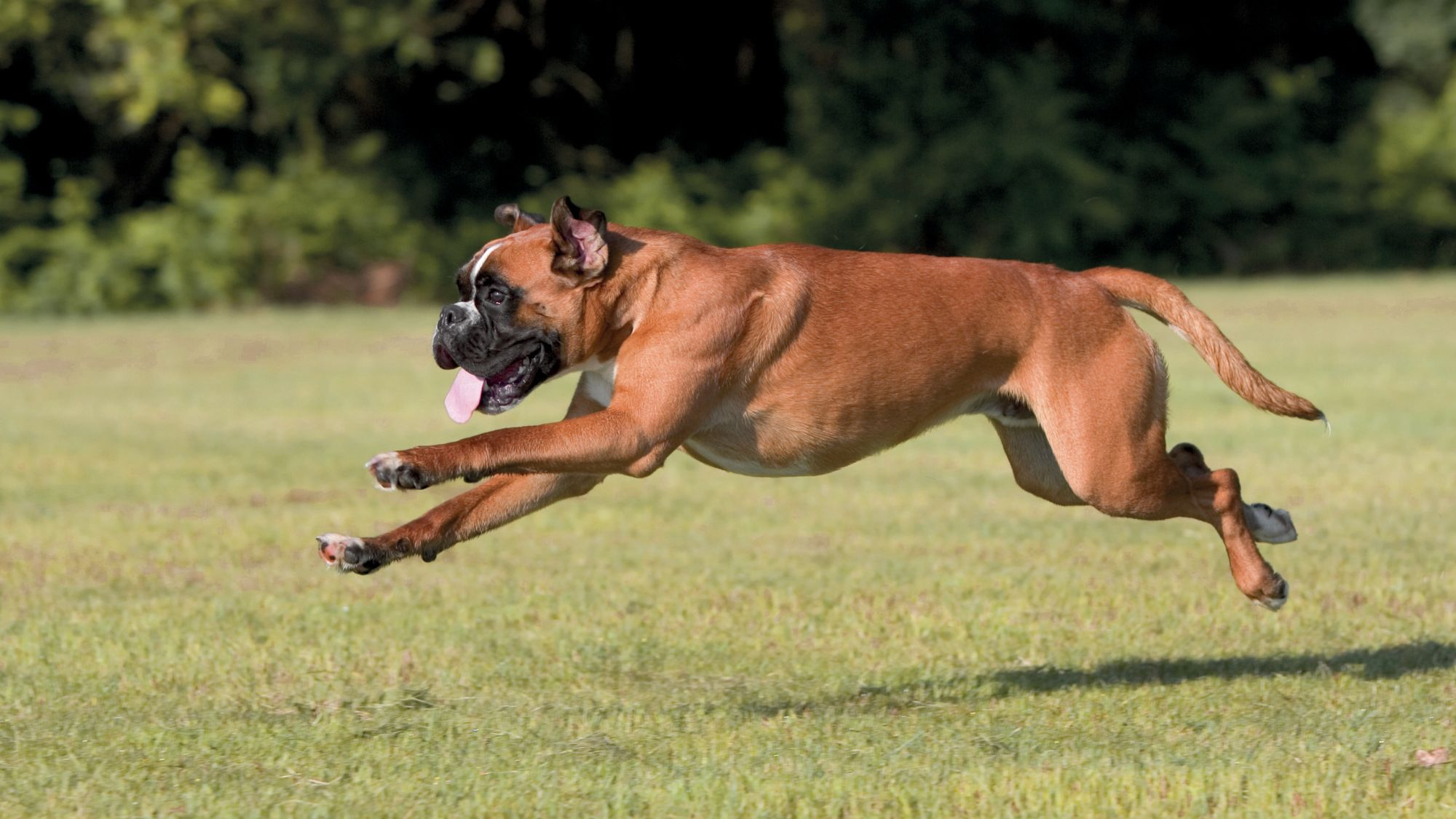
Caring for your Boxer
Grooming, training and exercise tips
With their seemingly limitless energy, Boxers need at least two hours of physical activity a day. Yes, two. This can be spread between regular walks, playing in the garden or a run in the park. In fact, they are a perfect breed for those looking for a jogging partner. In any event, daily walks are preferable to one long run at the weekend. Also, with their playful personality, Boxers enjoy games in the garden too. One thing to bear in mind is that Boxers don’t do well in hot weather. As a brachycephalic breed, they can sometimes struggle with their breathing. And remember to wait at least an hour after feeding before exercise.
With their short, glossy coats, one of the advantages of having a Boxer is the minimal grooming required. However, because they tend to shed all year long and their short prickly hair sticks to carpets and upholstery, a daily grooming/stroking with a glove will reduce the vacuum-cleaner use. They will only need a bath very occasionally – though be prepared for a bit of drooling. Like most breeds, Boxers’ teeth should be brushed regularly – daily if possible – and may require professional dental cleaning from time to time. Nails should be clipped as needed and ears checked weekly. Other than that, they should be good to go.
With the Boxer’s naturally boisterous nature, and tendency to jump up, early training is a good idea. Puppy classes are a helpful part of the socialisation process – especially as male Boxers in particular like to show other dogs who’s boss, so this can improve their tolerance towards other canines. Intelligent and keen to please (for the most part anyway!), Boxers learn quickly and respond well to gentle encouragement. They will also benefit from the continued mental stimulation, too, as boredom can lead to destructive behaviour such as chewing. On that note, they don’t deal well with being left on their own. Boxers make great therapy dogs too.
With their seemingly limitless energy, Boxers need at least two hours of physical activity a day. Yes, two. This can be spread between regular walks, playing in the garden or a run in the park. In fact, they are a perfect breed for those looking for a jogging partner. In any event, daily walks are preferable to one long run at the weekend. Also, with their playful personality, Boxers enjoy games in the garden too. One thing to bear in mind is that Boxers don’t do well in hot weather. As a brachycephalic breed, they can sometimes struggle with their breathing. And remember to wait at least an hour after feeding before exercise.
With their short, glossy coats, one of the advantages of having a Boxer is the minimal grooming required. However, because they tend to shed all year long and their short prickly hair sticks to carpets and upholstery, a daily grooming/stroking with a glove will reduce the vacuum-cleaner use. They will only need a bath very occasionally – though be prepared for a bit of drooling. Like most breeds, Boxers’ teeth should be brushed regularly – daily if possible – and may require professional dental cleaning from time to time. Nails should be clipped as needed and ears checked weekly. Other than that, they should be good to go.
With the Boxer’s naturally boisterous nature, and tendency to jump up, early training is a good idea. Puppy classes are a helpful part of the socialisation process – especially as male Boxers in particular like to show other dogs who’s boss, so this can improve their tolerance towards other canines. Intelligent and keen to please (for the most part anyway!), Boxers learn quickly and respond well to gentle encouragement. They will also benefit from the continued mental stimulation, too, as boredom can lead to destructive behaviour such as chewing. On that note, they don’t deal well with being left on their own. Boxers make great therapy dogs too.
7/7
All about Boxers
Despite their fierce heritage as fighting and hunting dogs, Boxers are gentle souls with a friendly, affectionate nature. They can be highly protective of their owners, but, in this case, their bark really is worse than their ‘bite’. In fact, it’s very rare for a Boxer dog to bite anyone.
Although they have a reputation for playing the clown a bit, Boxers are actually highly intelligent dogs that will benefit from plenty of mental stimulation. They also enjoy human company and thrive under the spotlight of attention. The more time and energy you invest in them, the more you will get back.
Other breeds that might interest you
Read more on this topic
Sources
- Veterinary Centers of America https://vcahospitals.com/
- Royal Canin Dog Encyclopaedia. Ed 2010 and 2020
- Banfield Pet Hospital https://www.banfield.com/
- Royal Canin BHN Product Book
- American Kennel Club https://www.akc.org/
Like & share this page